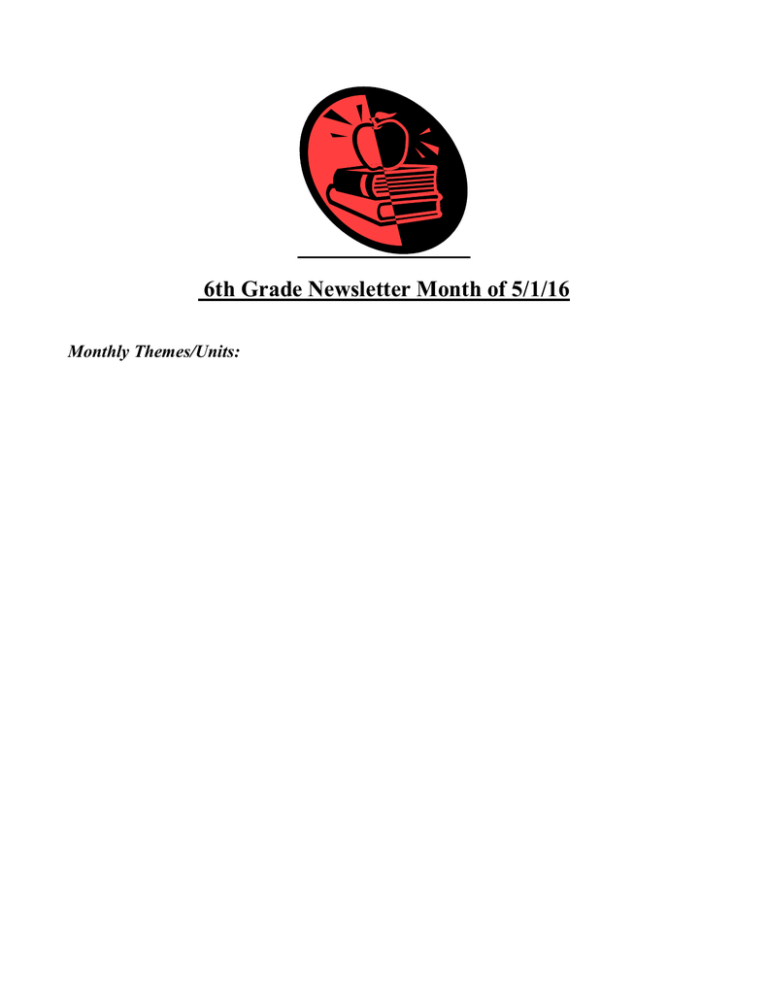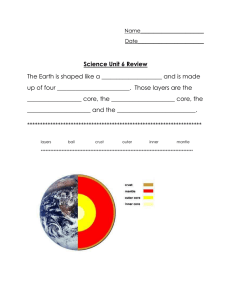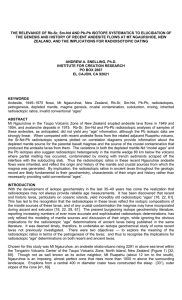6th Grade Newsletter Month of 5/1/16 Monthly Themes/Units:
advertisement

6th Grade Newsletter Month of 5/1/16 Monthly Themes/Units: ELA- Literary Analysis and Writing Grade 6 Module 5: Area, Surface Area, and Volume Problems Module Overview In this module, students utilize their previous experiences in order to understand and develop formulas for area, volume, and surface area. Students use composition and decomposition to determine the area of triangles, quadrilaterals, and other polygons. Extending skills from Module 3 where they used coordinates and absolute value to find distances between points on a coordinate plane, students determine distance, perimeter, and area on the coordinate plane in real-world contexts. Next in the module comes real-life application of the volume formula where students extend the notion that volume is additive and find the volume of composite solid figures. They apply volume formulas and use their previous experience with solving equations to find missing volumes and missing dimensions. The final topic includes deconstructing the faces of solid figures to determine surface area. To wrap up the module, students apply the surface area formula to real-life contexts and distinguish between the need to find surface area or volume within contextual situations. SOCIAL STUDIES Ed Smith 6th Graders are working on the WCNY Enterprise America Program WCNY’s Education Center offers programs for learners of all ages, including Enterprise America, an exciting hands-on co-curricular program for middle-school students. The first of its kind in New York state, the program involves a minimum of three weeks of classroom instruction, with teachers using curriculum aligned to state and 21st century learning standards provided by WCNY. Following the completion of classroom study, students embark on the Enterprise America experience, spending a day in WCNY’s Enterprise America city, which they are responsible for operating. Once in the city, students will apply the STEM (science, technology, engineering and math) and financial and civic literacy skills they have learned to run the city’s 14 businesses and City Hall. The students become business entrepreneurs and employees, consumers and citizens. They enact laws, elect a mayor and judge and decide whether or not to purchase employee medical insurance. The business owners visit the Enterprise America credit union to apply for loans to launch their “start-ups” while other students manufacture goods, such as pens, and offer services, including website design. Some students will become accountants, preparing invoices and paying bills; others will calculate energy usage in the city’s businesses and explore alternative energy sources, write stories and take photos for the city’s newspaper, and prepare orders and deliver supplies throughout the city. All the student employees will complete wellness surveys, cast votes on a real voting machine and oversee personal and business financial spending. Students eat their lunches and purchase, with Enterprise America dollars they have earned, healthy snacks on their breaks in the Enterprise America café. They may shop in the city’s retail businesses, contribute a portion of their salaries to charity and experience the dangers of texting while driving in simulators in the automotive center. It’s a business-to-business economy, where each student-run company strives to generate enough revenue to pay off its business loan. Students are involved and engaged. They communicate, collaborate and problem solve. In Enterprise America’s real-world, handson learning environment, students do the work, make the decisions and learn what careers may demand of them when they enter the workplace. By putting into practice the skills that 21st century businesses expect employees to possess, students realize the importance of staying in school for long-term success. Following the Enterprise America experience, students return to their classrooms where teachers utilize post-experience curriculum to have students write about their job performance, analyze their business operations and calculate and chart survey data. Pre and post program components aid in student assessment. SCIENCE - Unit 12: Earth’s Structure The earth first formed in a molten state and then the surface cooled into solid rock. ASL-p51-M1 The rock at Earth’s surface forms a nearly continuous shell around Earth called the lithosphere. PS 2.1c The interior of the earth is hot. Heat flow and movement of material within the earth cause earthquakes and volcanic eruptions and create mountains and ocean basins. 4C/M1ab Analysis of earthquake wave data (vibrational disturbances) leads to the conclusion that there are layers within Earth. These layers are the crust, mantle, outer core, and inner core, which have distinct properties. PS 2.2b Vibrations in materials set up wave-like disturbances that spread away from the source. Sound and Earthquake waves are an example. Vibrational waves move at different speeds in different materials. PS 4.4c Some changes in the earth's surface are abrupt (such as earthquakes and volcanic eruptions) while other changes happen very slowly (such as uplift and wearing down of mountains). 4C/M2a Folded, tilted, faulted, and displaced rock layers suggest past crustal movement. PS 2.2c Continents fitting together like puzzle parts and fossil correlations provided initial evidence that continents were once together. PS 2.2d The Theory of Plate Tectonics explains how the solid lithosphere consists of a series of plates that float on the partially molten section of the mantle. Convection cells within the mantle may be the driving force for the movement of the plates. PS 2.2e Plates may collide, move apart, or slide past one another. Most volcanic activity and mountain building occur at the boundaries of these plates, often resulting in earthquakes. PS 2.2f DATES TO REMEMBER: 5/4/16 – Education Day Incentive Trip – NBT Bank Stadium Chief’s Baseball Game 6/20/16 – WCNY Enterprise America Field Trip









